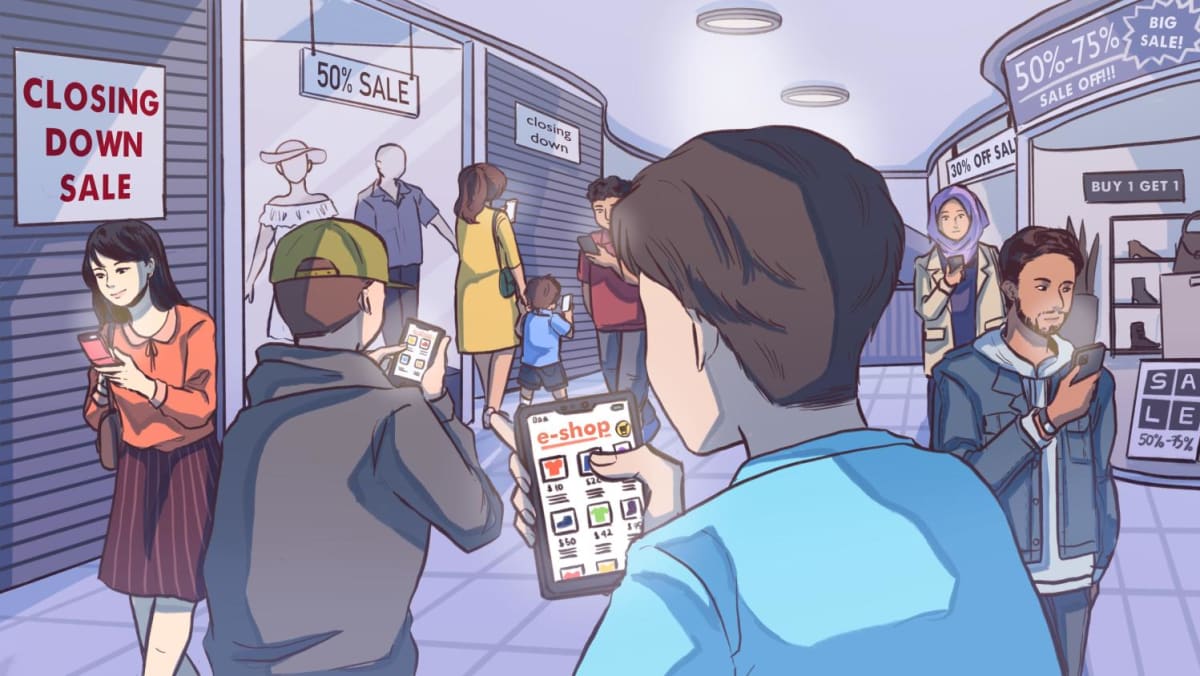IN FOCUS: They were ‘the place to be’ for generations of shoppers. But what lies ahead for department stores?
MORE CLOSURES, SHRINKING FOOTPRINT
But as competition stiffened, some in the industry started seeing the end of the day.
Yaohan closed in 1997 after its parent company in Japan went bust, while Daimaru shut in 2003. In 2005, Seiyu sold its Singapore business to CapitaLand, which in turn sold it to Beijing Hualian Group (BHG).
John Little shuttered its last outlet at Plaza Singapura in 2016, marking the end of Singapore’s oldest department store which had been open since 1842.
Store closures and the loss of household names continued in recent years, as more thorny challenges emerged.
For one, the appeal of a “one-stop shop” – the greatest strength of a department store – was fast losing relevance by the turn of the century with shopping malls sprouting up across Singapore.
“One can also say that shopping malls are akin to one big departmental mall,” said Ms Regina Yeo, who is an adjunct assistant professor of marketing at the National University of Singapore Business School.
“Department stores were once popular as they served as a ‘one-stop shop’. There were also fewer shopping centres conveniently located islandwide, so going to department stores was a treat to buy whatever one needs.”
The rise of budget air travel saw people taking their shopping overseas, but the biggest sledgehammer came in the form of e-commerce which upended consumer habits.
Retail therapy can now happen in the comfort of one’s home, with an abundance of options available at the tap of a button. Online shopping platforms and price comparison sites have chipped away at the need for in-store shopping and customer loyalty, especially among the young, said Ms Lim from Singapore Polytechnic.
Department stores, with their overheads and operating expenses, also find it hard to compete with online retailers in price, experts added.
Finally, the COVID-19 pandemic, which shuttered stores for months and sped up the digital shift, has been another deadly blow that Ms Yeo said has “certainly hastened the decline of department stores”.
Moving forward, obstacles are mounting in the form of rising costs and inflation.
In particular, department stores targeting the mainstream and mid-market segments may take a bigger hit from economic uncertainties, as their customers turn mindful about spending, said Ms Lim.
THE WAY FORWARD
So, what can be done?
Much has been said about going digital, with department stores now having their own online stores or tie-ups with e-commerce players.
Robinsons has also been resurrected as an online-only retailer after being acquired by Canningvale Australia last year. Managing director Jordan Prainito told CNA that sales have been “encouraging”, with “substantial growth” every month.
“As we are a privately held company, we cannot share any specifics, however we can say that millions of Singaporeans have returned to us online in the last 12 months and our year-over-year growth is high.”
Asked if pivoting online was the right way to go, Mr Prainito’s reply was in the affirmative.
“100 per cent,” he wrote in an email. “In a market where costs are surging in all aspects of business … launching an online store is more cost-effective than opening a new brick-and-mortar store.”
Operating online also allows Robinsons to “collect vital data” for product development and supplier acquisition objectives, while providing customers with convenience and other benefits, he added.
For all the latest business News Click Here

